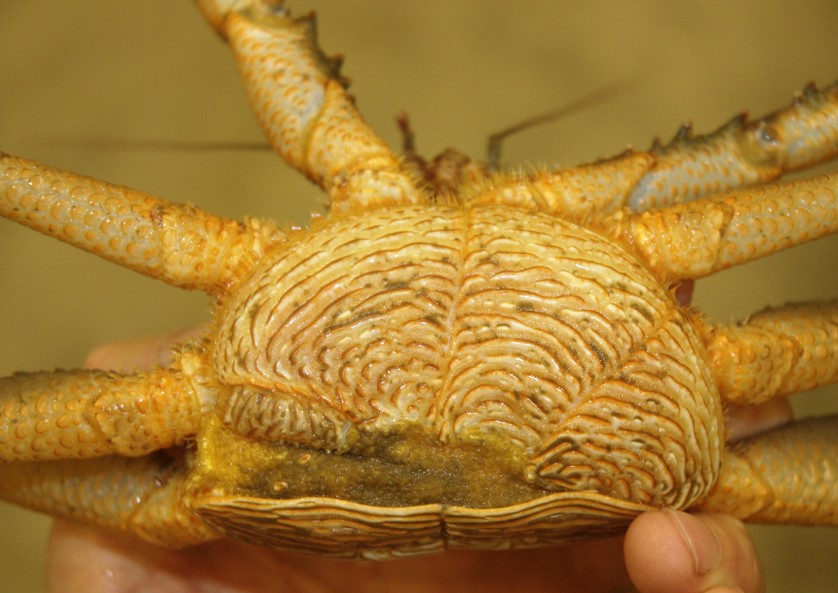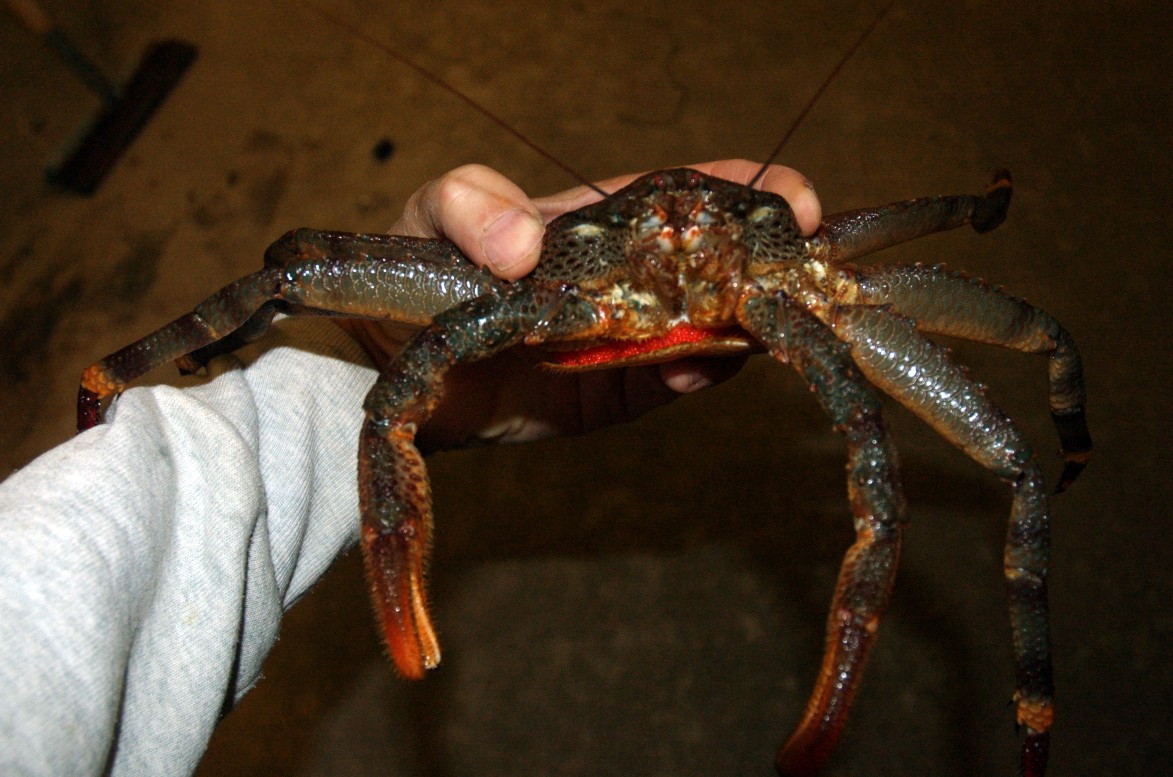Placetron wosnessenskii Schalfeew, 1892Common name(s): Scaled crab |
|
| Synonyms: Lepeopus forcipatus |  |
| Phylum Arthropoda
Subphylum Crustacea Class Malacostraca Subclass Eumalacostraca Superorder Eucarida Order Decapoda Suborder Pleocyemata Infraorder Anomura Superfamily Paguroidea Family Lithodidae |
|
| Placetron wosnessenskii, subtidal from 20m depth, Sares Head. Carapace width about 6 cm. | |
| (Photo by: Dave Cowles July 1997) | |
How to Distinguish from Similar Species: At first glance this crab looks superficially like the helmet crab Telmessus cheiragonus or even like the shield-back kelp crab Pugettia producta (both Brachyurans), but can be distinguished by the wide, soft abdomen, the scale-like appearance, and the modified 5th leg characteristic of Anomurans.
Geographical Range: Pribilof Islands to Puget Sound
Depth Range: Shallow subtidal to 110 m
Habitat: Vertical rock faces and overhangs associated with Metridium senile or Metridium giganteum, among boulders.
Biology/Natural History:
Have been observed
eating brittle stars. Predators of this species include river
otter.
The abdomen of the female is mostly covered with plates (photo); that of the male is
soft
with vestigial plates (photo).
We have sometimes observed this crab sheltering under the anemone Cribrinopsis
fernaldi (photo).
| Return to: | |||
| Main Page | Alphabetic Index | Systematic Index | Glossary |
References:
Dichotomous Keys:Hart, 1982
Kozloff 1987, 1996
General References:
Jensen,
1995
O'Clair
and O'Clair, 1998
Scientific Articles:
General Notes and Observations: Locations, abundances, unusual behaviors:
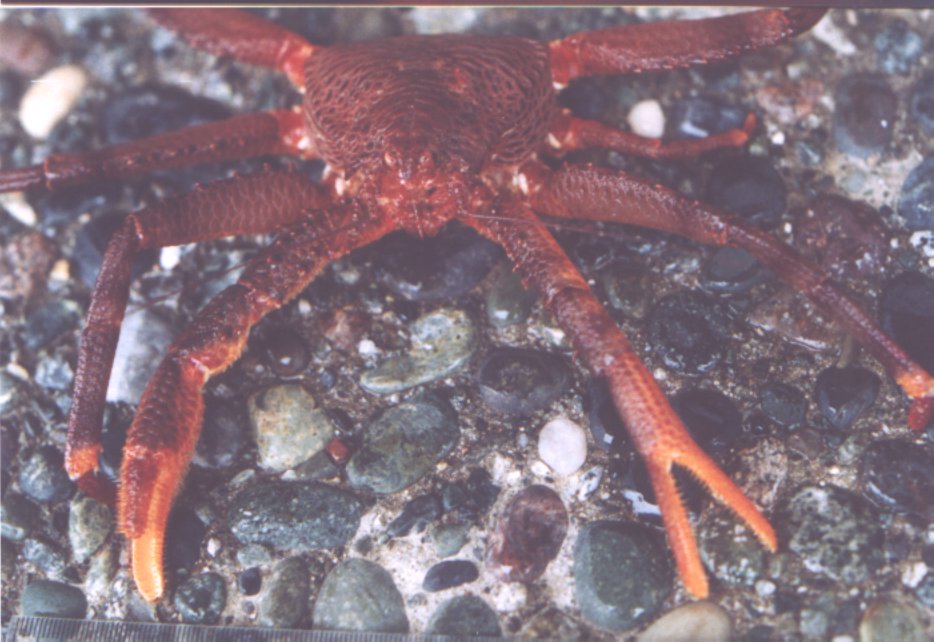
Another photo of the species. Dave Cowles, July 2001
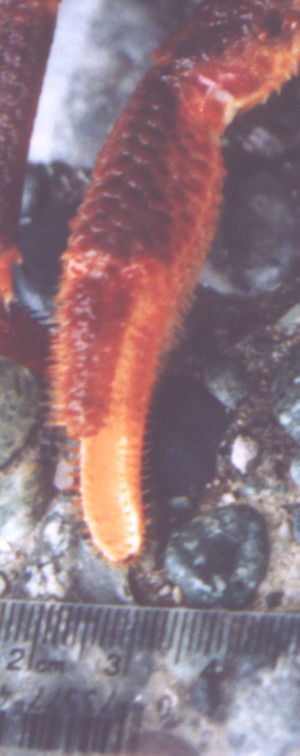
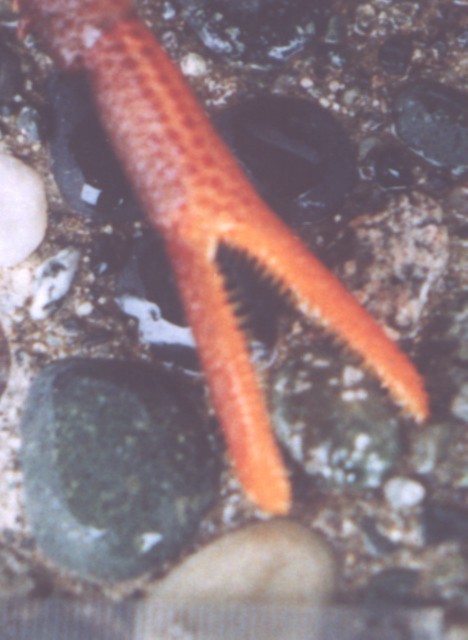
Enlargements of the right and left chelae from the picture above. Dave Cowles, July 2001

The broad abdomen of this species is soft, somewhat like leather; especially in the distal yellow portion visible above. This appears to be a male abdomen. See the photos below to compare with a female abdomen. Photo by Dave Cowles, July 2001
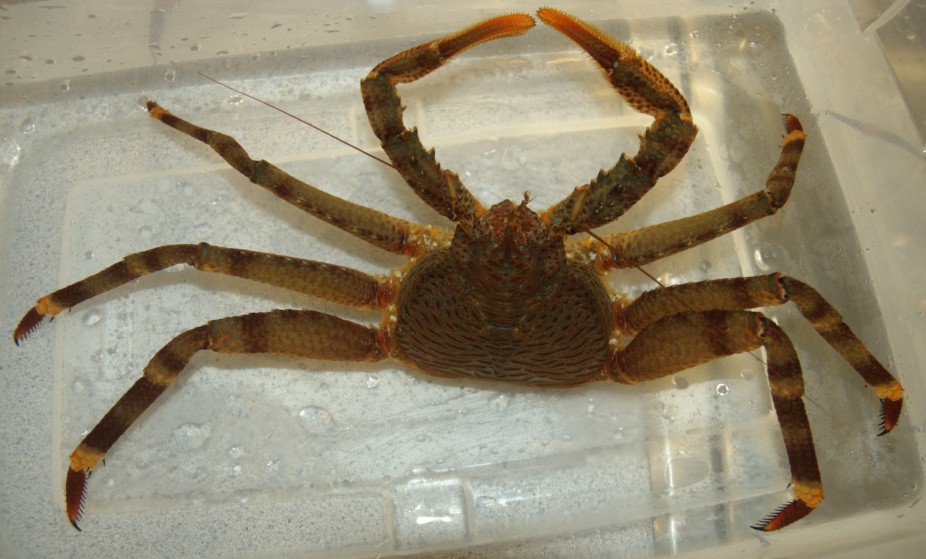
This gravid female found subtidally on Sares Head is 7 cm across the carapace. Photo by Dave Cowles, July 2012. See more photos of her below.
The underside of this female's abdomen is soft in part of it but has a rounded, hardened shield across the tip. She is carrying eggs (see below). Photo by Dave Cowles, July 2012
This is the same female as shown above. She is highly defensive of her abdomen but the crevice seen in this view shows that she is carrying many bright orange eggs.
Authors and Editors of Page:
Dave Cowles (2005): Created original page
